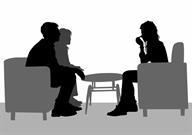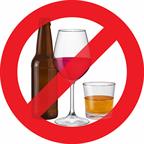Alcohol Use Disorder
Alcohol use disorder is a condition in which drinking disrupts daily life. People with this condition drink too much alcohol and cannot control their drinking.
Alcohol use disorder can cause serious problems with physical health. It can affect the brain, heart, and other internal organs. This disorder can raise the risk for certain cancers and cause problems with mental health, such as depression or anxiety.
What are the causes?
This condition is caused by drinking too much alcohol over time. Some people with this condition drink to cope with or escape from negative life events. Others drink to relieve symptoms of physical pain or symptoms of mental illness.
What increases the risk?
You are more likely to develop this condition if:
You have a family history of alcohol use disorder.
Your culture encourages drinking to the point of becoming drunk (intoxication).
You had a mood or conduct disorder in childhood.
You have been abused.
- You are an adolescent and you:
Have poor performance in school.
Have poor supervision or guidance.
Act on impulse and like taking risks.
What are the signs or symptoms?
Symptoms of this condition include:
Drinking more than you want to.
Trying several times without success to drink less.
Spending a lot of time thinking about alcohol, getting alcohol, drinking alcohol, or recovering from drinking alcohol.
Continuing to drink even when it is causing serious problems in your daily life.
Drinking when it is dangerous to drink, such as before driving a car.
Needing more and more alcohol to get the same effect you want (building up tolerance).
- Having symptoms of withdrawal when you stop drinking. Withdrawal symptoms may include:
Trouble sleeping, leading to tiredness (fatigue).
Mood swings of depression and anxiety.
Physical symptoms, such as a fast heart rate, rapid breathing, high blood pressure (hypertension), fever, cold sweats, or nausea.
Seizures.
Severe confusion.
Feeling or seeing things that are not there (hallucinations).
Shaking movements that you cannot control (tremors).
How is this diagnosed?
This condition is diagnosed with an assessment. Your health care provider may start by asking three or four questions about your drinking, or they may give you a simple test to take. This helps to get clear information from you.
You may also have a physical exam or lab tests. You may be referred to a substance abuse counselor.
How is this treated?

With education, some people with alcohol use disorder are able to reduce their drinking. Many with this disorder cannot change their drinking behavior on their own and need help with treatment from substance use specialists. Treatments may include:
Detoxification. Detoxification involves quitting drinking with supervision and direction of health care providers. Your health care provider may prescribe medicines within the first week to help lessen withdrawal symptoms. Alcohol withdrawal can be dangerous and life-threatening. Detoxification may be provided in a home, community, or primary care setting, or in a hospital or substance use treatment facility.
- Counseling. This may involve motivational interviewing (MI), family therapy, or cognitive behavioral therapy (CBT). A counselor can address the things you can do to change your drinking behavior and how to maintain the changes. Talk therapy aims to:
Identify your positive motivations to change.
Identify and avoid the things that trigger your drinking.
Help you learn how to plan your behavior change.
Develop support systems that can help you sustain the change.
- Medicines. Medicines can help treat this disorder by:
Support groups such as Alcoholics Anonymous (AA). These groups are led by people who have quit drinking. The groups provide emotional support, advice, and guidance.
Some people with this condition benefit from a combination of treatments provided by specialized substance use treatment centers.
Follow these instructions at home:

Medicines
-
Take over-the-counter and prescription medicines only as told by your health care provider.
-
Ask before starting any new medicines, herbs, or supplements.
General instructions
-
Ask friends and family members to support your choice to stay sober.
-
Avoid places where alcohol is served.
-
Create a plan to deal with tempting situations.
-
Attend support groups regularly.
-
Practice hobbies or activities you enjoy.
-
Do not drink and drive.
How is this prevented?
-
Do not drink alcohol if your health care provider tells you not to drink.
- If you drink alcohol:
- Limit how much you have to:
Know how much alcohol is in your drink. In the U.S., one drink equals one 12 oz bottle of beer (355 mL), one 5 oz glass of wine (148 mL), or one 1½ oz glass of hard liquor (44 mL).
-
If you have a mental health condition, seek treatment.
- Develop a healthy lifestyle through:
- If you are a teen:
Do not drink alcohol. Avoid gatherings where you might be tempted to drink alcohol.
Do not be afraid to say no if someone offers you alcohol. Speak up about why you do not want to drink. Set a positive example for others around you by not drinking.
Build relationships with friends who do not drink.
-
Substance Abuse and Mental Health Services Administration:
samhsa.gov
-
Contact a health care provider if:
-
You cannot take your medicines as told.
-
Your symptoms get worse or you experience symptoms of withdrawal when you stop drinking.
-
You start drinking again (relapse) and your symptoms get worse.
Get help right away if you feel like you may hurt yourself or others, or have thoughts about taking your own life. Go to your nearest emergency room or:
Summary
-
Alcohol use disorder is a condition in which drinking disrupts daily life. People with this condition drink too much alcohol and cannot control their drinking.
-
Treatment may include detoxification, counseling, medicines, and support groups.
-
Ask friends and family members to support you. Avoid situations where alcohol is served.
-
Get help right away if you have thoughts about hurting yourself or others.
This information is not intended to replace advice given to you by your health care provider. Make sure you discuss any questions you have with your health care provider.
 With education, some people with alcohol use disorder are able to reduce their drinking. Many with this disorder cannot change their drinking behavior on their own and need help with treatment from substance use specialists. Treatments may include:
With education, some people with alcohol use disorder are able to reduce their drinking. Many with this disorder cannot change their drinking behavior on their own and need help with treatment from substance use specialists. Treatments may include: